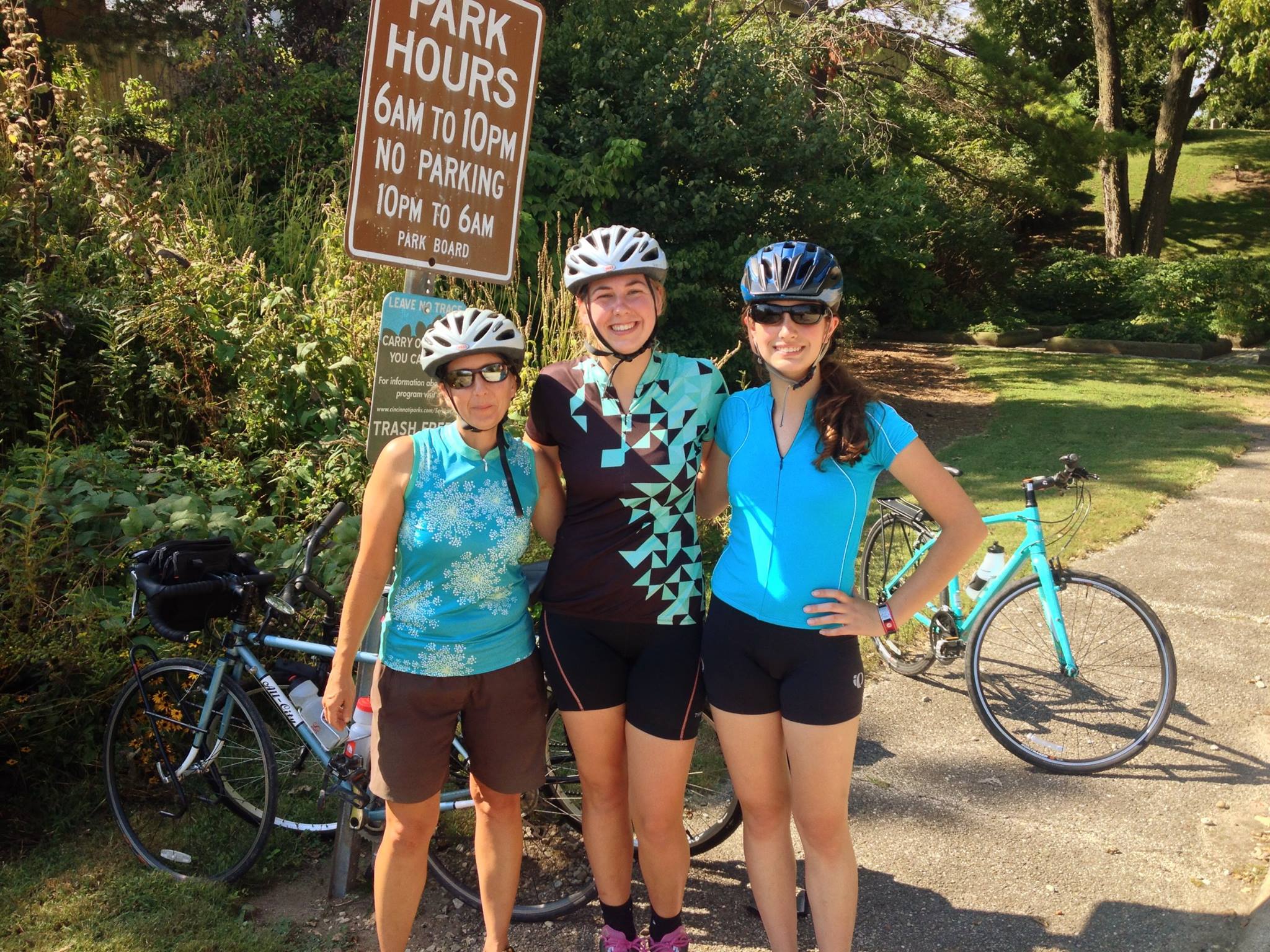Course: HIST-256: Bicycling the Bioregion

Course: HIST-256: Bicycling the Bioregion
Faculty: Kathleen Smythe, Ph.D.
Ten days out of the semester students in Kathleen Smythe’s Bicycling the Bioregion class bike around Cincinnati from four to eight hours. The students, led by Dr. Smythe and Joe Humpert, President of Queen City Bike, have met with a variety of community members ranging from a naturalist from Cincinnati Parks to a Native American historian explaining Fort Ancient and previous indigenous cultures.
The course is aimed to help students experience firsthand the history of the landscape and understand each cities unique landscape wherever they go. With Smythe’s knowledge and love for Cincinnati, and Humpert’s assistance with logistics and historical information, they were able to create a tour of Cincinnati for students that allows them to feel more connected to the land.
As part of the course, students are required to write in a weekly journal detailing their experiences maintaining a bike, their time on the assigned bike rides, and how their experience ties into the readings in class. Students in her class engage with topics exploring the history of Cincinnati and questioning human nature and sustainability.
"The journals are designed to get students out of [their] normal routine and, therefore, out of [their] comfort zones,” Smythe notes in her syllabus, “It is also designed to ask big, broad questions to help guide [students] as an Earthling, resident on a threatened planet to a heightened awareness of what is most important about our humanity and our species’ relationships to other species and to water, air, and soil.”
“I really enjoy using the journals as a space to explore my experience biking and time in the city of Cincinnati, senior Clare Ravizza shared. I also really enjoy engaging with the central questions to the course of the natural world, and embodied humans moving into the future.”
The final assignment for the course is for students to create their own tour with three stops that describes their historical, ecological, or civic significance.
“I don’t have a car on campus so I wanted to learn how to bike around the city. We have also learned to bike as part of the group- in the past I have only biked on biking trails, and part of the course we learn how to bike on the streets and how to move as a group and protect one another,” Ravizza added.
Smythe hopes that by the end of the course students would learn more about what they are interested in and excited about as they navigate the rest of their life.
“I hope students realize that getting outside, learning about their place, getting exercise, meeting people from different walks of life, rejuvenates them,” Smythe said, “ And reminds them of the fact that they have both minds and bodies, and both need to be nurtured. And I hope they want to take care of the places they live.”